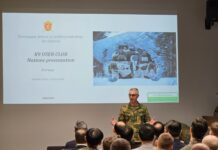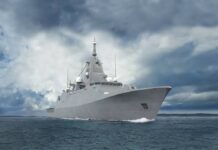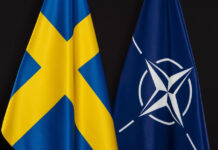A pair of Royal Air Force (RAF) Eurofighter Typhoons have successfully landed on and taken off from a regular highway for the first time, the RAF reported on 24 September.
The road landings and take-offs occurred in Finland during Exercise ‘Baana 23’: this year’s iteration of the Finnish Air Force’s annual road base exercise, which took place in Tervo in south-central Finland from 18-22 September and used a single-lane highway in Tervo that is normally used for road traffic but is specially designed to also function as an emergency airstrip if required.
During the exercise the RAF Typhoons were based out of Kuopio Airport in Rissala, where the Finnish Air Force’s Karelia Air Command, which had lead responsibility for this year’s event, is based. In addition to the Typhoons’ two pilots, a small number of RAF personnel were on the ground to refuel and maintain the aircraft to ensure they could continue operating.
The Typhoons were deployed for Exercise ‘Baana 23’ as part of an RAF focus on what it now terms ‘agile combat employment’ to outmanoeuvre an adversary. This involves dispersing to remote locations to avoid being attacked and continuing to operate with minimal support.
Apart from the Finnish Air Force’s Boeing F/A-18 Hornets and RAF Typhoons, Lockheed Martin F-35A Joint Strike Fighters from the Royal Norwegian Air Force also took part in Exercise ‘Baana 23’.
The Officer Commanding of the RAF’s 41 Test and Evaluation Squadron, who was one of the two pilots to take part in the exercise, was quoted by the RAF as saying, “This is an opportunity to work with one of our newest NATO partners on an exercise in Agile Combat Employment. The Finnish have worked hard for decades on disparate operations should they be attacked and need to disperse their aircraft.

“Once we landed on the strip we stopped to refuel before taking off again. I couldn’t help but look around and think ‘I am sitting in a jet on a road in the middle of a forest in Finland’. That was pretty crazy and definitely a first.”
The second pilot, who was only identified as ‘Jim’, was quoted as saying, “This is a great step forward for RAF Typhoon capability. We often talk about capability being the stuff that we fly with such as weapons and sensors. What is great about this is it a novel way of employing the jet, improving our survivability against modern threats and operating from dispersed locations, and also doing that while working closely with our allies, who are absolutely critical to future operations.”
While the RAF is not completely new to dispersed operations, they were last practised regularly during the Cold War years from the 1970s onwards, when the pilots of RAF Hawker Siddeley Harrier vertical/short take-off and landing (V/STOL) aircraft were versed in operating from forest clearings in West Germany to defend the Fulda Gap from any potential Warsaw Pact offensive.
Peter Felstead











